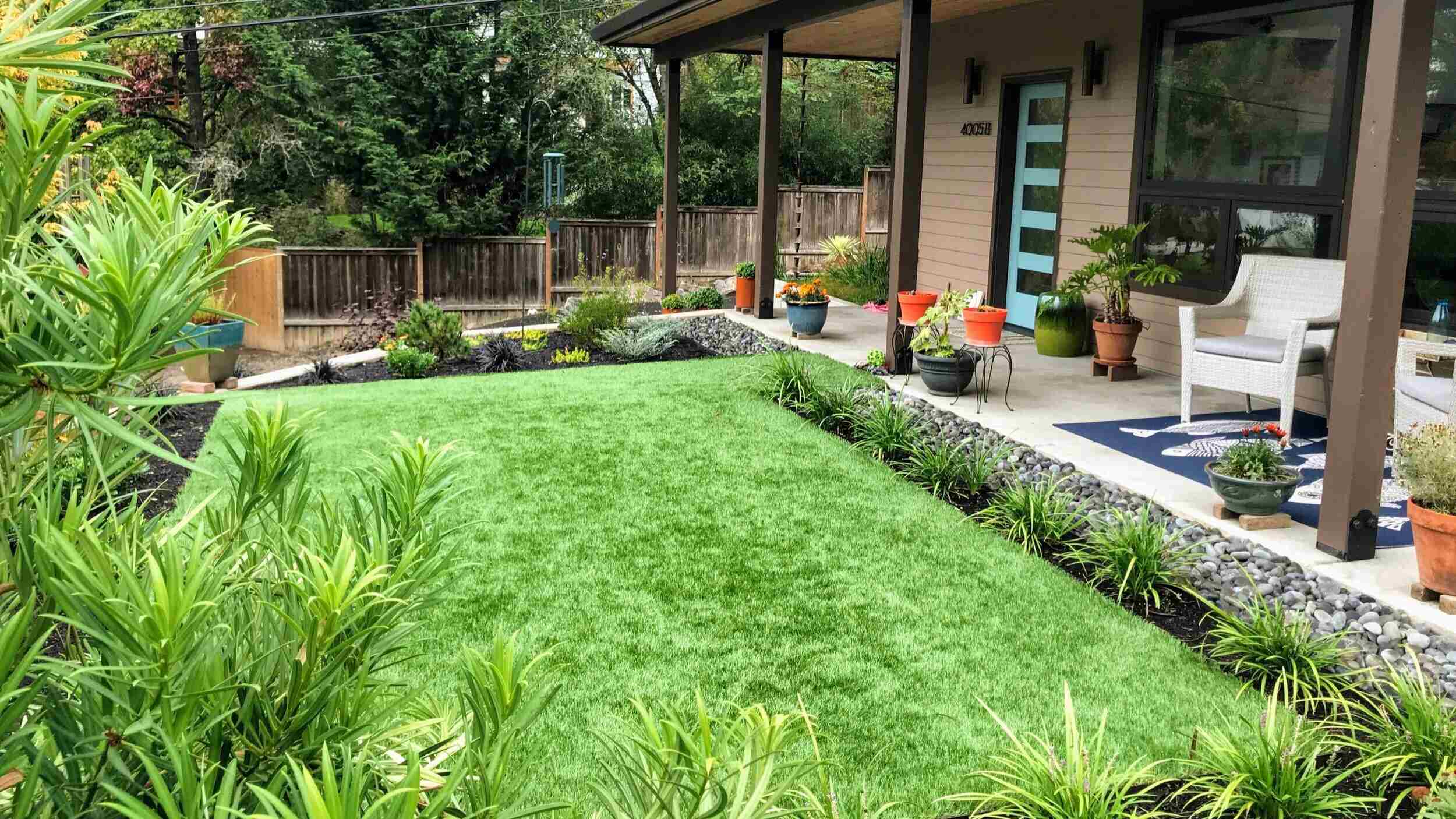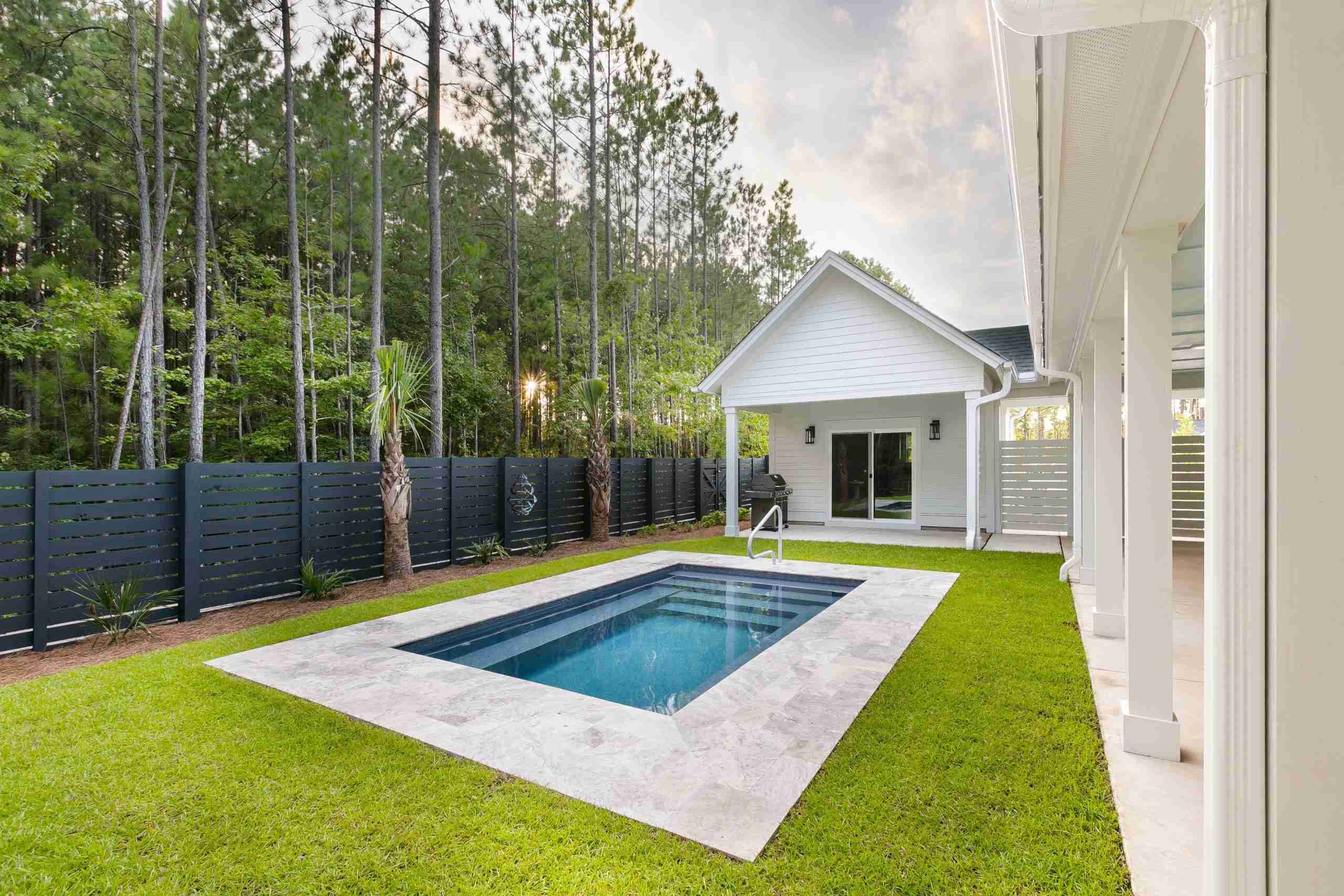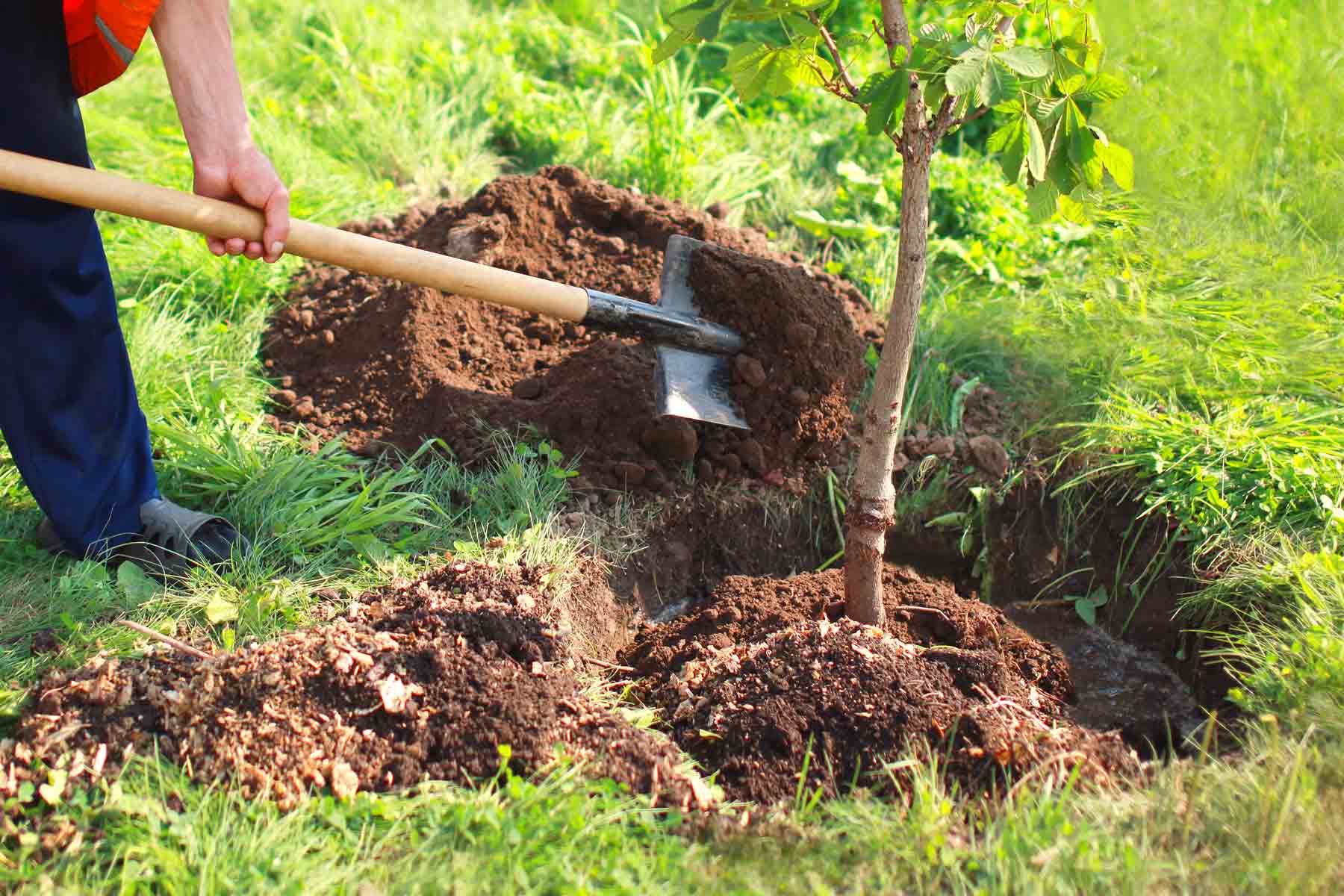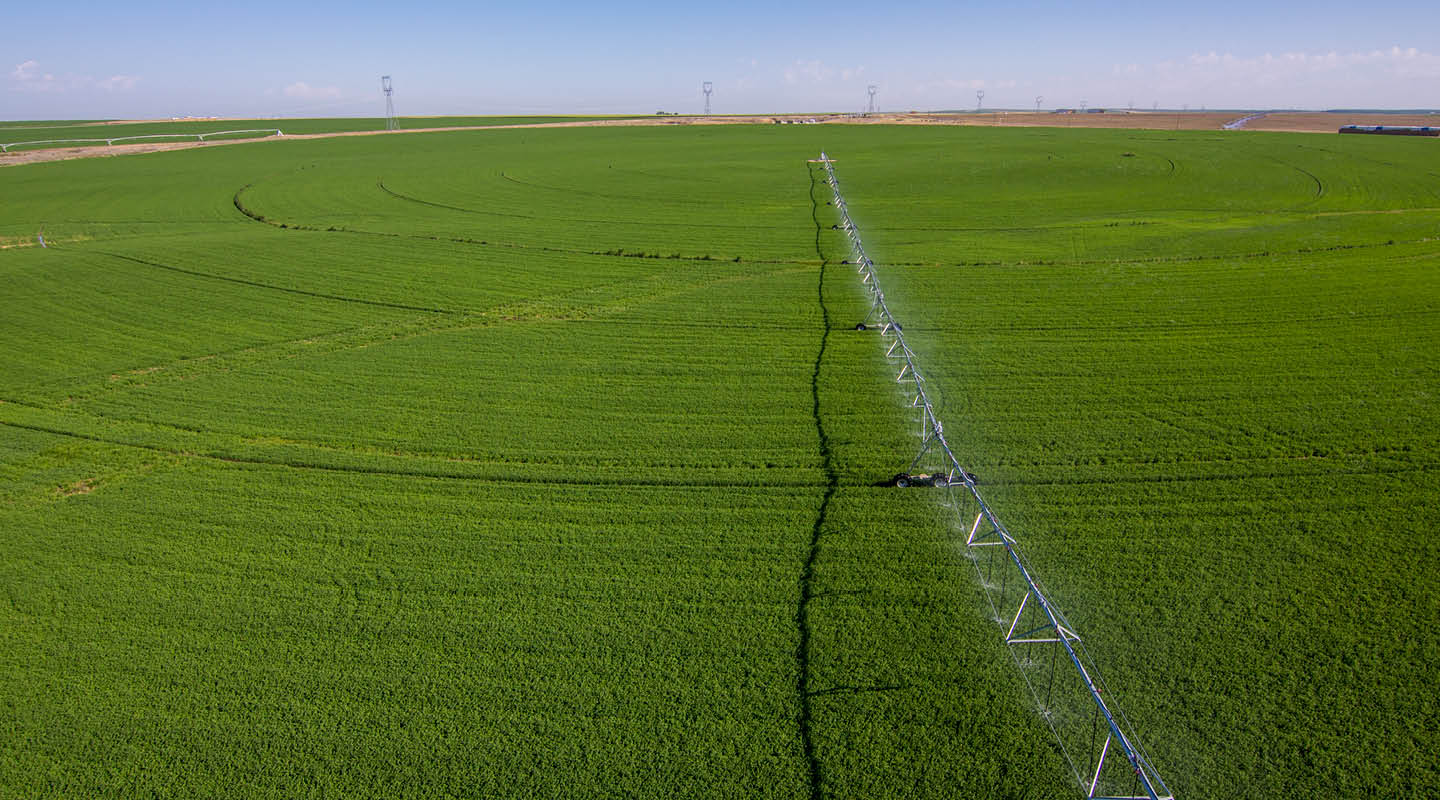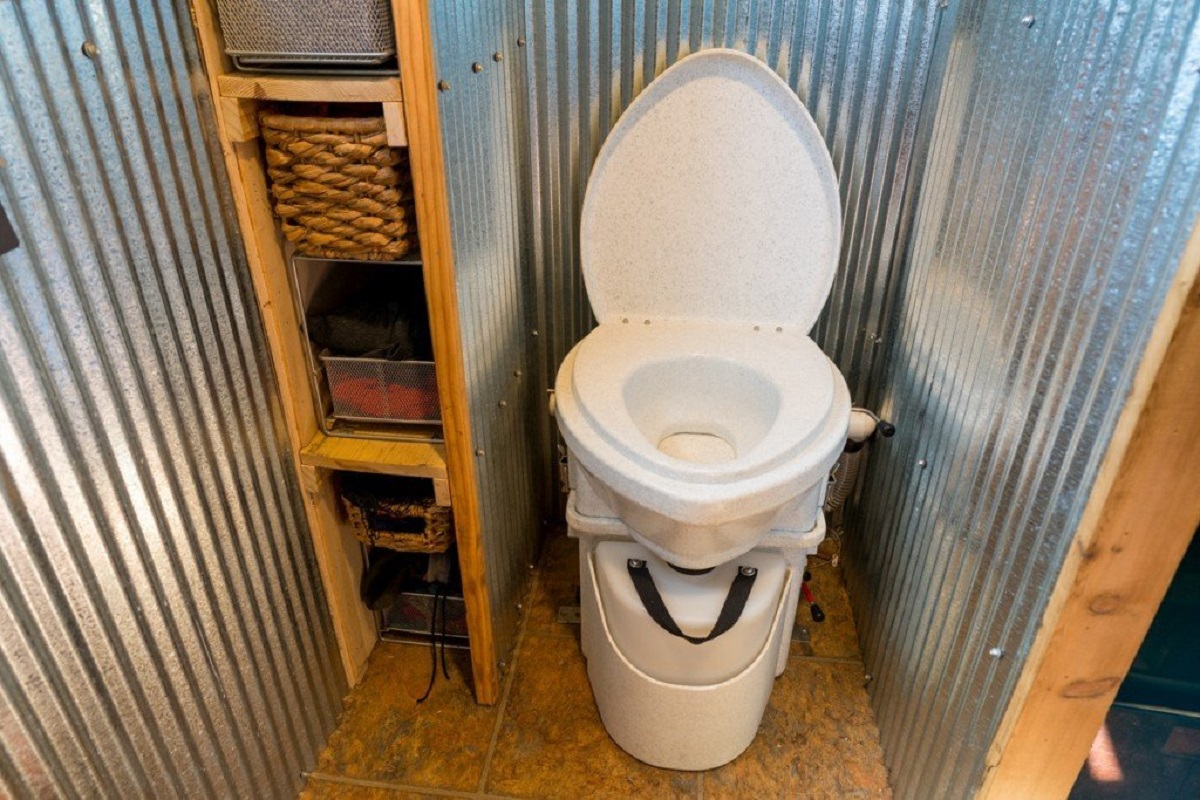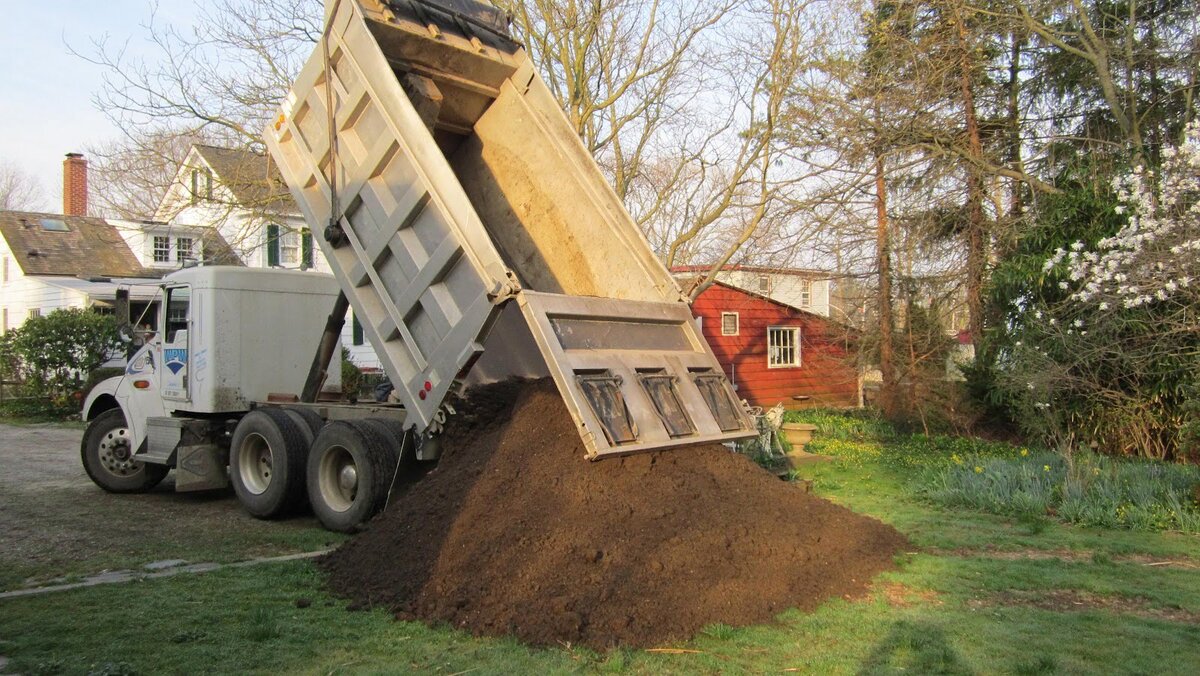Home>Garden Design>How Much Does It Cost To Build A Studio In The Backyard
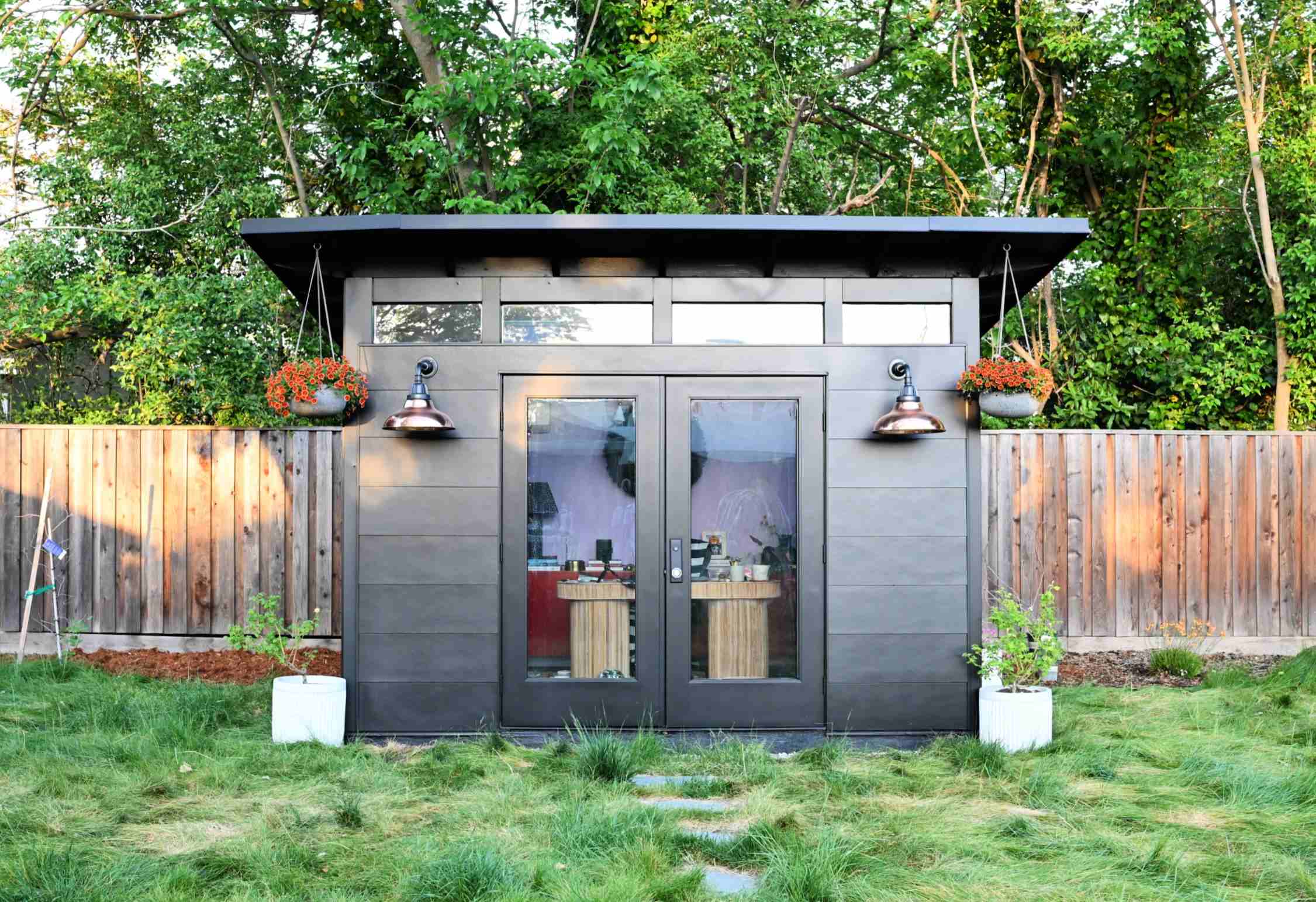

Garden Design
How Much Does It Cost To Build A Studio In The Backyard
Published: August 5, 2023
Discover the cost of creating your dream studio in your backyard with professional landscape design services. Transform your outdoor space into a creative oasis with our affordable and innovative solutions.
(Many of the links in this article redirect to a specific reviewed product. Your purchase of these products through affiliate links helps to generate commission for Chicagolandgardening.com, at no extra cost. Learn more)
Table of Contents
- Introduction
- Factors to Consider Before Building a Studio
- Design and Layout
- Materials and Construction
- Electrical and Plumbing
- Soundproofing
- Lighting and Acoustics
- Heating and Cooling
- Windows and Doors
- Flooring and Interior Finishes
- Furniture and Equipment
- Permitting and Legal Considerations
- Cost Breakdown
- Conclusion
Introduction
Welcome to the world of backyard studios! If you’ve ever dreamt of having a dedicated space to pursue your passions, whether it’s art, music, or simply a tranquil retreat, then building a studio in your backyard can be a game-changer. Not only does it provide you with a private sanctuary away from the hustle and bustle of daily life, but it also allows you to unleash your creativity without any distractions.
Before embarking on the journey of building a backyard studio, it is important to consider various factors to ensure that you create a space that meets your specific needs and complements the overall aesthetic of your property. From the design and layout to the materials and construction, every aspect requires careful consideration to bring your vision to life.
In this article, we will delve into the various aspects of building a backyard studio, helping you understand the essential components and providing cost estimates to assist you in planning your budget. By the end, you will have a comprehensive understanding of what it takes to create a stunning and functional studio in your own backyard.
It’s worth noting that building a studio is different from constructing a traditional structure in your backyard. A studio requires specific considerations such as soundproofing, lighting, acoustics, and functionality. Moreover, obtaining the necessary permits and ensuring compliance with local regulations is critical to avoid any legal issues down the line. Therefore, it’s important to have a clear understanding of these factors before diving into the project and investing your time and money.
Building a backyard studio is an exciting endeavor that can transform your creative pursuits. Not only does it provide a dedicated space for you to explore and hone your skills, but it also adds value to your property. So, let’s dive into the intricacies of building a studio in your backyard and explore the different factors to consider before embarking on this rewarding journey.
Factors to Consider Before Building a Studio
Before you start building your backyard studio, there are several important factors to consider. These factors will help you determine the size, layout, and features of your studio, ensuring that it meets your specific needs and preferences.
First and foremost, you need to assess the available space in your backyard. Consider the size of your property and determine the most suitable location for your studio. Take into account factors such as sunlight, accessibility, and privacy. Additionally, check local regulations and permits required for building a structure in your backyard.
Next, define the purpose of your studio. Are you planning to use it as an art studio, a music recording space, a home office, or a multipurpose creative sanctuary? Knowing the primary purpose of the studio will impact various design elements, such as the layout, lighting, and soundproofing requirements.
Consider your budget and set realistic expectations. Building a backyard studio can be a considerable investment, so it’s important to determine how much you’re willing to spend on construction, materials, and additional features. Keep in mind that there may be unforeseen expenses along the way, so it’s wise to allocate a portion of your budget as a contingency fund.
Think about the functional requirements of your studio. Will you need storage space, built-in shelving, or a separate area for equipment? Assess your workflow and consider the necessary amenities like electrical outlets, internet connectivity, and ventilation. Having a clear idea of your functional needs will ensure that your studio is designed to optimize your productivity and creativity.
Don’t forget to consider the aesthetic appeal of your backyard studio. As much as it needs to be functional, it should also be visually pleasing and complement the overall look and feel of your property. Choose a design that aligns with your personal style, whether it’s modern, rustic, or minimalist.
Lastly, think about the future. Are there any potential expansions or modifications you may want to incorporate in the future? Having a flexible design that allows for future growth can save you time and money if your needs change over time.
By carefully considering these factors before building your backyard studio, you can ensure that your space is functional, aesthetically pleasing, and aligned with your goals and preferences. Taking the time to plan properly will result in a studio that you can enjoy for years to come.
Design and Layout
The design and layout of your backyard studio play a crucial role in creating a functional and visually appealing space. The design should reflect your personal style, while also considering the practical aspects of the studio.
Start by determining the size and shape of your studio. This will depend on the available space in your backyard and the intended use of the studio. A larger studio will provide more flexibility, while a smaller one may be more suitable for a specific purpose such as a home office.
Consider the orientation of the studio in relation to the sun and other structures on your property. Optimal placement allows you to make the most of natural light and minimizes potential disruptions from neighboring buildings or trees.
Next, think about the layout and organization of the interior space. Designate specific areas for different activities, such as a workspace, storage, or relaxation area. Consider the workflow and ensure that the layout allows for easy movement and efficient use of space.
When it comes to the design aesthetic, the choice is entirely up to you. Whether you prefer a contemporary style, a cozy cabin vibe, or something in between, make sure the design aligns with your personal taste and complements the overall look of your property.
Incorporate ample windows to bring in natural light, creating a bright and inviting atmosphere. Not only does natural light enhance productivity, but it also reduces the need for artificial lighting during the day.
Furthermore, consider the use of sustainable and eco-friendly materials in your studio design. Opt for materials that are durable, low-maintenance, and environmentally conscious. This not only benefits the environment but also adds to the longevity and value of your studio.
Finally, don’t forget about the exterior design. Choose materials and colors that harmonize with the rest of your property. Consider landscaping and outdoor elements to create a seamless transition between your backyard and the studio.
Remember, the design and layout of your backyard studio should prioritize both functionality and style. By carefully planning and considering these factors, you can create a space that inspires and enhances your creative pursuits.
Materials and Construction
Choosing the right materials and ensuring proper construction are essential for building a sturdy and long-lasting backyard studio. The materials you select will affect not only the durability and structural integrity of the studio but also its aesthetic appeal.
When it comes to the foundation, you have several options. Concrete slab foundations are a popular choice as they provide a solid base and help with insulation. Another option is using pressure-treated wood for the foundation, which provides a more cost-effective solution.
For the walls, you can choose from various materials such as wood, steel, or even eco-friendly options like reclaimed materials. Wood is a popular choice due to its natural beauty and versatility. However, steel offers superior strength and durability. Consider the climate and maintenance requirements when selecting the materials for the walls.
For the roof, you can opt for traditional shingles, metal roofing, or even a green roof. Each material has its own advantages and considerations, such as cost, durability, and energy efficiency. Metal roofing, for example, is known for its longevity and ability to withstand harsh weather conditions.
Insulation is an important aspect to consider in your construction. Proper insulation helps regulate the temperature inside the studio, making it comfortable throughout the year. Insulate the walls, roof, and floors to minimize heat transfer and maximize energy efficiency.
Windows and doors play a crucial role in the overall design and functionality of your studio. Choose high-quality, energy-efficient windows that provide ample natural light and proper ventilation. Opt for doors that are secure, weather-resistant, and complement the style of your studio.
When it comes to the interior finishes, consider materials that are not only aesthetically pleasing but also easy to maintain. Look for durable flooring options such as hardwood, laminate, or vinyl. Additionally, choose paint or wall coverings that are resistant to wear and tear.
Proper construction techniques are crucial to ensure the stability and durability of your backyard studio. If you’re not experienced in construction, it’s advisable to hire a professional contractor who specializes in building studios. They can ensure that the studio is built to code and withstands the test of time.
Remember, the choice of materials and the quality of construction are vital in creating a studio that meets your needs and lasts for years to come. Investing in high-quality materials and skilled construction will save you time, money, and headaches in the long run.
Electrical and Plumbing
When building a backyard studio, it’s important to consider the electrical and plumbing requirements to ensure a fully functional and safe space.
Electrical systems are essential for powering your studio’s lighting, appliances, and equipment. It’s crucial to consult with a licensed electrician to determine the electrical needs of your studio and to ensure that all wiring is properly installed and up to code. They will help you plan the placement of outlets, switches, and circuits, taking into account the number of electrical devices you will be using.
Consider the type and amount of lighting you want in your studio. Natural lighting is ideal, but you may also need artificial lighting for working during darker hours. LED lights are energy-efficient and provide excellent illumination for your space.
Additionally, think about any special electrical requirements you may have. If you’re planning to use power-hungry equipment like music recording gear or heavy machinery, you may need dedicated circuits to handle the load. Discuss these needs with your electrician to ensure that your electrical system can support your activities safely.
Plumbing considerations will depend on the function of your studio. If you plan to have a sink, running water, or a restroom, you will need to connect your studio to the main water supply and ensure proper plumbing installation. It’s vital to consult with a professional plumber to handle this aspect of your project and ensure that all plumbing fixtures are installed correctly.
For plumbing needs, it’s important to determine the location of water supply lines, drain lines, and any necessary plumbing vents. Properly planning and installing these components will ensure that your studio’s plumbing functions smoothly without any leaks or drainage issues.
Additionally, consider the insulation and protection of your electrical and plumbing systems. Proper insulation of electrical wires and plumbing pipes will protect them from extreme temperatures and potential damage. It’s important to safeguard these systems to prevent any safety hazards or costly repairs in the future.
Remember, consulting with professionals in both electrical and plumbing fields is crucial to ensure that your backyard studio has a safe and functional electrical and plumbing system. By addressing these aspects, your studio will be equipped to provide the necessary utilities for your creative pursuits.
Soundproofing
One of the key considerations when building a studio in your backyard is soundproofing. Whether you plan to use the space for music recording, podcasting, or simply to enjoy a quiet atmosphere, effective soundproofing is essential to minimize external noise and create an acoustically controlled environment.
There are several techniques and materials you can use to achieve soundproofing in your backyard studio. Here are some options to consider:
1. Double or Triple Layered Walls: Building double or triple-layered walls with air gaps in between can help reduce sound transmission. Use materials like drywall or plywood for the walls to create a barrier against noise.
2. Insulation: Insulating the walls, ceilings, and floors of your studio with soundproofing materials such as rock wool or acoustic foam can help absorb and block out unwanted noise.
3. Sealing Gaps and Cracks: Seal any gaps and cracks in walls, windows, and doors to prevent sound leakage. Weatherstripping or acoustic sealants can be used for this purpose.
4. Soundproof Doors and Windows: Invest in soundproof doors and windows that are specifically designed to minimize sound transmission. These doors and windows are often constructed with multiple layers of glass and weatherstripping.
5. Acoustic Panels: Install acoustic panels on the walls to absorb sound reflections and improve the overall acoustics of the space. These panels are available in various shapes, sizes, and designs to suit your aesthetic preferences.
6. Floating Floors: Consider installing a floating floor, which is a floor system that is detached from the structure of the building. This helps to reduce vibrations and impact noise that may travel through the floor.
7. Soundproof Curtains or Blinds: Hang soundproof curtains or blinds over windows to further block out external noise and improve soundproofing.
It’s important to note that achieving complete soundproofing may be challenging, especially if you are located in a noisy neighborhood or near busy roads. However, by incorporating these soundproofing techniques, you can significantly reduce the impact of external noises and create a quieter and more focused environment inside your backyard studio.
If you are unsure about the best soundproofing methods for your specific needs, consulting with an acoustics expert or professional contractor can provide you with valuable insights and guidance.
Lighting and Acoustics
When designing your backyard studio, it’s important to pay attention to both lighting and acoustics to create a space that is comfortable, functional, and conducive to your creative pursuits.
Lighting plays a crucial role in setting the mood and enhancing productivity in your studio. Natural light is ideal, as it provides a sense of openness and can boost your mood. Consider the placement and size of windows to maximize the amount of natural light that enters the space. Additionally, install light fixtures that provide sufficient illumination for tasks such as reading, painting, or working on a computer. LED lights are energy-efficient and provide excellent lighting options for your studio.
Acoustics are equally important, especially if your studio will be used for music recording or podcasting. The right acoustics will ensure that sound is reproduced accurately and that you have control over the ambient noise within the space. Consider using acoustic panels on the walls to absorb excess sound reflections and reduce echo. These panels come in various sizes and designs, allowing you to customize the aesthetics while improving sound quality. Additionally, strategically placing furniture, bookshelves, or plants can help break up sound waves and minimize reverberation.
When it comes to lighting and acoustics, it’s important to strike a balance. While natural light is desirable, it can sometimes lead to sound reflections or glare on screens. Use curtains or blinds to control the amount of light entering the studio, or consider installing window films that reduce glare while still allowing natural light to illuminate the space. Additionally, be mindful of the placement of your lighting fixtures to avoid casting shadows or causing glare on surfaces where you may be working.
Consider the specific activities you will be undertaking in your studio and design the lighting accordingly. Task lighting is important for focused work areas, while ambient lighting can create a more relaxed atmosphere. Dimmer switches are a great addition to have, as they allow you to adjust the lighting levels depending on your needs and preferences.
Lastly, don’t underestimate the impact of colors on lighting and acoustics. Light-colored walls and ceilings can help brighten up the space, while darker colors may absorb more sound and create a more intimate atmosphere. Experiment with different color schemes to find the perfect balance between aesthetics and functionality.
By carefully considering lighting and acoustics in your backyard studio, you can create a space that is not only visually appealing but also optimized for your creative endeavors. Take the time to plan and experiment with different lighting setups and acoustic treatments to achieve the best results.
Heating and Cooling
Creating a comfortable environment in your backyard studio requires careful consideration of heating and cooling systems. Proper temperature control ensures that you can work year-round, regardless of the weather conditions outside.
When it comes to heating, there are several options to consider. A popular choice is installing a dedicated heating system, such as a furnace or a mini-split heat pump. These systems provide efficient heating and can be controlled to maintain a consistent and comfortable temperature inside your studio. Another option is radiant floor heating, which involves installing heating elements beneath the flooring to create evenly distributed warmth.
In colder climates, proper insulation is essential to retain heat and minimize energy loss. Insulate the walls, ceiling, and floors to prevent drafts and keep the heat inside your studio. Adequate insulation will also help maintain a more consistent temperature throughout the year.
If you live in a warmer climate, cooling your studio is equally important. Air conditioning systems such as central air conditioning, ductless mini-split units, or portable air conditioners can keep your studio cool during hot summer months. Consider the size of your studio and the climate in your area when selecting the most suitable cooling system.
Proper ventilation is crucial for maintaining good air quality inside your studio. Use ceiling fans or a ventilation system to circulate the air and prevent stagnation. Opening windows and using natural cross-ventilation can also help improve airflow and regulate temperature.
Smart thermostats and programmable temperature controls can help you optimize energy usage and maintain a comfortable temperature in your studio. You can schedule the heating and cooling systems to run at specific times or adjust the temperature remotely through smartphone apps.
When planning your heating and cooling systems, it’s important to consider energy efficiency. Look for Energy Star-rated equipment and ensure that your studio is properly insulated to minimize energy consumption. This not only reduces your carbon footprint but also saves you money on utility bills in the long run.
Lastly, regular maintenance of your heating and cooling systems is essential to ensure their efficiency and longevity. Schedule routine inspections, cleanings, and filter replacements to keep the systems running smoothly and avoid any unexpected breakdowns.
By incorporating proper heating and cooling systems, you can create a comfortable and pleasant environment in your backyard studio. Whether it’s battling the winter chill or beating the summer heat, you’ll be able to focus on your creative pursuits year-round without any discomfort.
Windows and Doors
Windows and doors are not only functional elements of your backyard studio but also contribute significantly to the overall design and ambiance of the space. Carefully selecting the right windows and doors will enhance the aesthetic appeal, provide proper ventilation, and ensure security.
When choosing windows for your studio, consider both form and function. Opt for windows that complement the design style of your studio while providing ample natural light and views of the surrounding environment. Common types of windows include casement windows, double-hung windows, or sliding windows. It’s also important to consider the energy efficiency of the windows, looking for options that are double-glazed or have low emissivity (Low-E) coatings to minimize heat loss or gain.
Placement of windows is crucial for both lighting and ventilation. Design the placement of windows to maximize natural light while also considering privacy and views. Consider how the sunlight moves throughout the day and plan the position of windows accordingly. Additionally, strategically placing windows to catch breezes can promote natural ventilation and help regulate the temperature inside your studio.
The doors of your backyard studio provide both access and security. Choose a door that is durable, weather-resistant, and complements the overall aesthetic of your studio. Popular options include solid wood doors, fiberglass doors, or steel doors. Consider adding a glass panel to the door to enhance natural light and create a visual connection between the interior and exterior spaces. Ensure that the door is properly sealed to prevent air leaks and enhance energy efficiency.
Security is an important consideration when it comes to doors. Install a solid lock system that provides the necessary level of security for your peace of mind. Consider additional features such as motion sensor lights or a security camera system to further enhance the safety of your backyard studio.
In addition to aesthetics and security, windows and doors also play a role in soundproofing your studio. Consider using double-paned or laminated glass for your windows and sealing the gaps around windows and doors to minimize sound leakage. This is especially important if your studio is used for activities that require a quiet and controlled environment.
Regular maintenance of windows and doors is crucial to ensure their longevity and functionality. Inspect them periodically for any signs of damage or wear, and make any necessary repairs or replacements promptly.
By carefully selecting and placing windows and doors in your backyard studio, you can create an inviting and functional space that seamlessly blends with the surrounding landscape. Take the time to consider your needs for lighting, ventilation, security, and soundproofing to ensure that your windows and doors enhance both the aesthetics and functionality of your studio.
Flooring and Interior Finishes
The flooring and interior finishes of your backyard studio are essential for both aesthetics and functionality. Choosing the right materials and finishes will not only enhance the overall look of your space but also create a comfortable and durable environment to support your creative endeavors.
When it comes to flooring, consider options that are easy to maintain and suitable for your specific needs. Hardwood flooring adds a touch of elegance and durability, while laminate flooring offers a cost-effective alternative that mimics the look of hardwood. Vinyl flooring is another popular choice, known for its affordability, versatility, and easy maintenance. Concrete floors can also be a stylish and low-maintenance option, especially for a modern or industrial aesthetic.
Carpeting is another option to consider, especially if you want a cozier and more sound-absorbent feel. Choose carpets that are durable and stain-resistant, and consider adding a carpet pad for extra cushioning and insulation.
Interior finishes such as paint or wallpaper help set the tone and style of your studio. Lighter and neutral colors can make the space feel more open and inviting, while bold and vibrant colors can add personality and energy. Consider the atmosphere you want to create and select interior finishes that align with your vision.
Don’t forget about storage and shelving options, as they play a crucial role in keeping your studio organized and clutter-free. Built-in shelving or modular storage units can provide both functionality and aesthetic appeal. Consider incorporating storage solutions that fit your specific needs, such as art supply storage, bookshelves, or cubbies.
Additionally, consider the use of decorative elements such as artwork, plants, or curtains to enhance the visual appeal of your studio. These finishing touches can create a welcoming and inspiring space.
While choosing and installing flooring and interior finishes, it’s important to prioritize quality and durability. Select materials that can withstand the demands of your creative pursuits and potential foot traffic. Invest in high-quality finishes that are resistant to wear and tear, ensuring their longevity and minimizing the need for frequent replacements or repairs.
Lastly, maintaining and cleaning your flooring and interior finishes regularly will help them stay in good condition for years to come. Follow the manufacturer’s recommendations for cleaning and care, and address any spills or stains promptly to avoid permanent damage.
By carefully selecting flooring and interior finishes that complement your style and meet your functional needs, you can create a beautiful and inspiring space in your backyard studio. Take the time to explore different options and consider your long-term goals to ensure that the finishes you choose will support your creative endeavors.
Furniture and Equipment
Choosing the right furniture and equipment for your backyard studio is essential to create a functional and comfortable space that supports your creative pursuits. The furniture and equipment you select should align with the purpose of your studio and provide the necessary tools and resources for your specific activities.
Consider the layout and size of your studio when selecting furniture. Opt for pieces that fit well within the space without feeling cramped. Modular furniture can be a great option as it allows for flexibility and can be rearranged to accommodate different activities. Additionally, consider incorporating multifunctional furniture such as storage ottomans or desks with built-in shelves to maximize your use of space.
Ergonomics is an important consideration when choosing furniture. Investing in a comfortable chair and an ergonomic desk will not only prevent discomfort and back pain but also enhance your productivity. Look for furniture with adjustable features, such as height-adjustable desks or chairs with lumbar support.
If your studio serves as a workspace, ensure that you have ample storage for your tools, supplies, and equipment. Consider storage solutions such as drawers, shelves, or storage cabinets that can keep your space organized and clutter-free. Utilizing vertical space with wall-mounted shelves or pegboards can also be beneficial in maximizing storage capacity.
Based on your creative pursuits, select the necessary equipment to support your activities. If you’re a photographer, make sure you have the right lighting equipment, tripods, and backdrops. If you’re a musician, invest in high-quality instruments, amplifiers, and recording equipment. Assess your specific needs and invest in equipment that will enhance your creativity and productivity in your studio.
Don’t overlook the importance of proper lighting in your workspace. Opt for task lighting that provides adequate illumination for your activities. Consider flexible desk lamps or overhead lighting that can be adjusted to suit your needs. Additionally, integrate tasteful and functional lighting fixtures that complement the overall design aesthetic of your studio.
Comfort and aesthetics go hand in hand when selecting furniture for your studio. Choose pieces that inspire you and create an environment where you feel motivated and focused. Consider adding personal touches like artwork, plants, or decorative items that reflect your personality and style.
When purchasing furniture and equipment, quality is key. Look for durable and long-lasting pieces that will withstand the demands of your creative activities. Research brands and read reviews to ensure that you invest in items that are known for their quality and reliability.
Regular maintenance and organization of your furniture and equipment are crucial for an efficient and inviting studio. Keep your furniture clean and well-maintained, and regularly declutter and organize your space to maximize productivity and creativity.
By carefully selecting furniture and equipment that align with your needs and style, you can create a functional and inspiring space in your backyard studio. Consider your workflow, comfort, and the specific tools and resources required for your creative pursuits to curate a space that supports your artistic endeavors.
Permitting and Legal Considerations
Before embarking on the construction of your backyard studio, it’s important to understand and comply with the permitting and legal requirements in your area. Building codes and regulations ensure the safety, structural integrity, and proper use of the space.
Start by researching and familiarizing yourself with the local zoning laws and building codes. These regulations dictate the size, height, setbacks, and permissible usage of structures in residential areas. Check with your local municipality or planning department to understand the specific requirements for building a backyard studio.
Depending on the size and function of your studio, you may need to obtain a building permit. This process typically involves submitting plans, paying a fee, and having your project reviewed by the local building department. Failure to obtain the necessary permits can result in fines, delays, and even removal of the structure.
Along with building permits, you may also need to consider other legal considerations. For example, if you plan to run a business from your studio, you may need to obtain a separate business permit or license. It’s important to consult with local authorities or a legal professional to ensure compliance with any applicable regulations.
Take into account any architectural review boards or homeowner association (HOA) guidelines that may govern the appearance and design of structures in your neighborhood. These organizations may have specific requirements that affect the design, materials, and color of your backyard studio.
Keep in mind that certain structural features or changes to the exterior may require additional permits or inspections. This includes elements like electrical installations, plumbing, or modifications that may impact the structural integrity of the studio.
Complying with permitting and legal requirements is not only important for legal reasons but also for insurance purposes. Ensure that your homeowner’s insurance policy covers the structure and contents of your backyard studio. It’s advisable to consult with your insurance provider to make any necessary adjustments or additions to your policy.
Throughout the construction process, it’s crucial to maintain clear documentation, including permits, plans, and inspections. This will not only help ensure compliance but will also be valuable if you plan to sell your property in the future, as potential buyers will want to verify the legality and quality of any structures on the premises.
By understanding and adhering to the permitting and legal considerations, you can avoid unnecessary complications, ensure the safety of your studio, and enjoy peace of mind knowing that your project is in compliance with local regulations.
Cost Breakdown
Building a backyard studio involves various costs, and understanding the breakdown of these expenses can help you plan your budget effectively. The overall cost will depend on factors such as the size of the studio, the materials used, the complexity of the design, and the location. Here is a general cost breakdown to consider:
1. Design and Architectural Fees: This includes the cost of working with an architect or designer to create the plans and overall design for your studio. These fees can vary depending on the complexity of your project and the level of customization required.
2. Materials and Construction: The cost of materials will depend on the type of structure, the quality of materials, and any additional features or finishes you choose. This includes the foundation materials, walls, roof, flooring, and interior finishes. The construction costs will depend on the size and complexity of the project, as well as labor costs in your area.
3. Electrical and Plumbing: This includes the cost of hiring licensed professionals to handle the electrical and plumbing installations in your studio. It encompasses the cost of wiring, switches, outlets, plumbing fixtures, and any necessary connections to the main electrical and water supply.
4. Soundproofing and Acoustic Treatment: If soundproofing is a priority for your studio, you may need to invest in additional materials and treatments, such as acoustic panels or specialized insulation. The cost will depend on the size of your studio and the extent of soundproofing required.
5. Windows and Doors: The cost of windows and doors will depend on the type, size, and material chosen. Consider energy efficiency and soundproofing features when selecting these elements.
6. Heating and Cooling Systems: The cost of heating and cooling systems will vary depending on the type and size of the system. Consider the energy efficiency of the system and whether it aligns with your heating and cooling needs in your specific climate.
7. Furniture and Equipment: The cost of furnishing and equipping your studio will depend on your specific needs and preferences. Consider the cost of desks, chairs, storage units, lighting fixtures, and any specialized equipment or tools required for your creative pursuits.
8. Permits and Legal Considerations: Factor in the cost of building permits and any other legal requirements or consultations you may need to comply with local regulations and ensure the legality and safety of your backyard studio.
It’s important to note that labor costs can vary significantly depending on your location and the complexity of the project. Obtaining multiple quotes from contractors and professionals can help you get a better understanding of the labor costs involved.
Remember to set aside a contingency fund for any unforeseen expenses or changes that may arise during the construction process. It’s also advisable to invest in quality materials and workmanship to ensure the durability and longevity of your studio.
By taking into account these various cost factors and thoroughly planning your budget, you can effectively estimate the total expenses involved in building a backyard studio and ensure a successful and financially viable project.
Conclusion
Building a backyard studio is an exciting and rewarding project that can provide you with a dedicated space to pursue your creative passions. From design and construction to the selection of materials, furniture, and equipment, every aspect contributes to creating a functional and inspiring environment.
Before embarking on your backyard studio journey, it’s important to carefully consider factors such as the purpose of the studio, the available space, your budget, and any legal requirements. Taking the time to plan and research will ensure that your studio meets your specific needs and complies with local regulations.
Designing a backyard studio involves making choices about the layout, materials, and finishes that will best suit your preferences and activities. The right windows, doors, flooring, and interior finishes can enhance the functionality and aesthetics, while proper lighting, acoustics, and soundproofing contribute to creating a conducive environment for your creative pursuits.
It’s also crucial to consider heating, cooling, and the necessary electrical and plumbing requirements. By addressing these aspects, you will ensure a comfortable and functional space that can be enjoyed throughout the year.
Throughout the process, stay mindful of your budget and allocate funds appropriately for the design, construction, and necessary permits. Consulting professionals when needed and incorporating quality materials and workmanship will ensure the durability and longevity of your backyard studio.
Lastly, remember that building a backyard studio is not only an investment in your creative endeavors but also in your property. It adds value, functionality, and visual appeal to your home, raising its overall desirability.
By considering all these factors and making informed decisions, you can create a backyard studio that reflects your personal style, supports your creative pursuits, and brings you joy and inspiration for years to come.
